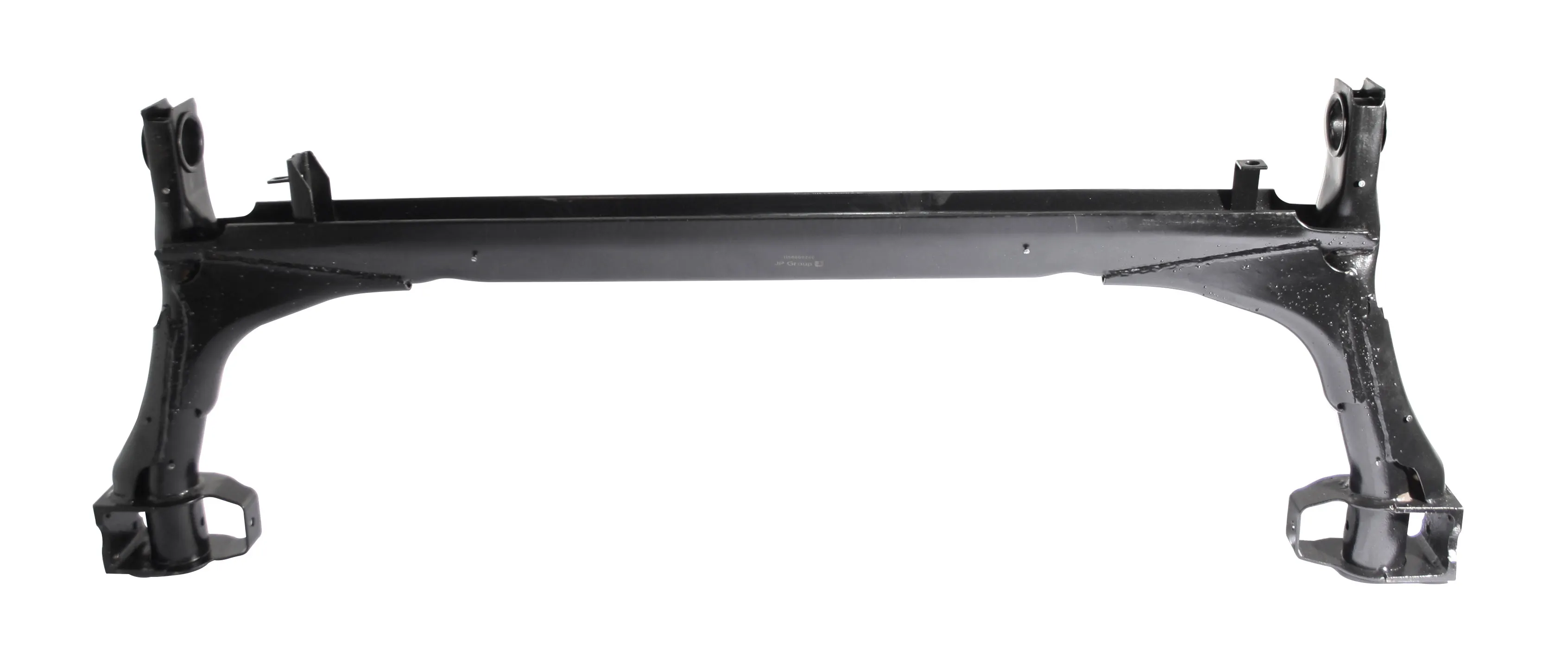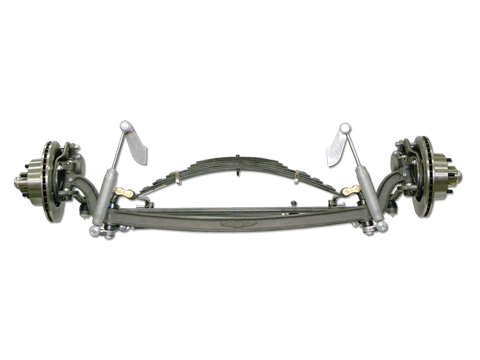Product Description
Product parameter
General information about TND axle CO., Ltd
HangZhou TND axle CO. Ltd, is a professional manufacturer for axle and auto parts, based in HangZhou, China, we pride ourselves on pushing the boundaries of engineering excellence, and our newest line of axles is no exception. Manufactured in our state-of-the-art facility in China, each axle is crafted with precision and expertise, incorporating the latest advancements in military-grade technology.
Here are just a few key features of our axles:
Unrivaled Durability: Built to withstand the most demanding conditions, our axles are engineered to last, ensuring minimal downtime for your fleet.
Precision Engineering: Every component is meticulously designed and manufactured to exacting standards, guaranteeing optimal performance and safety.
Enhanced Efficiency: Our axles are optimized for maximum efficiency, helping you streamline operations and reduce fuel consumption.
Advanced Technology: Utilizing cutting-edge technology, our axles offer state-of-the-art features to enhance control, stability, and overall performance.
By investing in our high-tech axles, you’re not just upgrading your fleet; you’re investing in reliability, efficiency, and peace of mind.
We sincerely welcome the opportunity to discuss how our axles can benefit your business specifically. Whether you’re looking to improve performance, reduce maintenance costs, or enhance the safety of your fleet, we have the solution you need.
Usage: Suitale for all-road condition across the globe
Quality Certificate: ISO certified
/* January 22, 2571 19:08:37 */!function(){function s(e,r){var a,o={};try{e&&e.split(“,”).forEach(function(e,t){e&&(a=e.match(/(.*?):(.*)$/))&&1
| After-sales Service: | 3 Years Warranty |
|---|---|
| Condition: | New |
| Axle Number: | 1 |
| Application: | Trailer |
| Certification: | ASTM, CE, ISO |
| Material: | Steel |
| Samples: |
US$ 350/Piece
1 Piece(Min.Order) | |
|---|
| Customization: |
Available
| Customized Request |
|---|

Are there potential challenges or limitations to using beam axles in vehicles?
Using beam axles in vehicles has both advantages and disadvantages. It’s important to consider the challenges and limitations associated with beam axles:
1. Ride Quality:
Beam axles are generally stiffer than independent suspension systems. This stiffness can lead to a less comfortable ride on smooth or well-paved roads, as they transmit more road imperfections and vibrations to the passengers. Passengers may perceive this as a limitation in terms of ride comfort.
2. Limited Articulation:
Beam axles have limited articulation. When one wheel encounters a bump or obstacle, the other wheel is affected as well. This can result in a bumpier ride compared to independent suspension systems, where each wheel can move independently to absorb shocks. Off-road vehicles may experience challenges in maintaining traction on rough terrains due to this limitation.
3. Reduced Traction in Some Scenarios:
Beam axles can experience reduced traction in certain scenarios, such as when one wheel loses contact with the ground. In off-road situations, this can limit the vehicle’s ability to traverse uneven terrain, especially when compared to independent suspension systems that allow each wheel to react independently to ground conditions.
4. Challenging Maneuverability:
Maneuverability can be a limitation in vehicles with beam axles. The stiffness and design of beam axles can make it harder to navigate tight spaces or execute sharp turns. This can be a drawback, especially in urban environments or when parking in confined areas.
5. Weight Distribution:
Proper weight distribution is crucial for vehicle stability. Beam axles, while offering even weight distribution between wheels on the same axle, may not provide the same level of precision in weight distribution as independent suspension systems. This can affect handling and stability in some situations.
6. Limited Ride Comfort on Smooth Roads:
On smooth and well-paved roads, solid beam axles may lead to reduced ride comfort due to their stiffness. Passengers may experience a more jarring ride, and the vehicle may struggle to absorb minor road imperfections.
7. Noise and Vibration:
Beam axles can transmit more noise and vibration from the road to the vehicle’s occupants. This can result in a less refined and quieter cabin environment compared to vehicles with independent suspension systems.
8. Suspension Tuning Challenges:
Designing the suspension components and tuning the shock absorbers for vehicles with beam axles can be challenging. Manufacturers must strike a balance between load-carrying capacity and ride comfort. Achieving an ideal balance can be difficult and may require compromises.
9. Vehicle-Specific Considerations:
The limitations of beam axles can vary depending on the vehicle’s intended use and design. While some limitations may be acceptable in off-road or heavy-duty applications, they may not be suitable for passenger cars or vehicles designed for urban commuting.
Summary:
Beam axles offer advantages in terms of durability and load distribution, but they also come with limitations related to ride comfort, maneuverability, and traction in certain scenarios. Vehicle manufacturers must carefully consider these limitations and weigh them against the specific needs and intended use of the vehicle.

Can you explain the impact of beam axles on a vehicle’s ground clearance?
The choice of suspension, including beam axles, can have a significant impact on a vehicle’s ground clearance, which is the distance between the lowest point of the vehicle and the ground. Here’s how beam axles can affect ground clearance:
1. Beam Axles and Ground Clearance:
Beam axles are known for their simplicity and durability, making them a common choice in certain vehicle types. Here’s how they influence ground clearance:
- Raised Chassis: Vehicles equipped with beam axles tend to have a raised chassis because the axle itself, along with its components, is located below the vehicle’s frame. This design provides a good amount of ground clearance, especially in off-road and heavy-duty vehicles.
- Consistent Clearance: Beam axles maintain a relatively consistent ground clearance across the width of the vehicle. This even clearance can be advantageous when traversing uneven terrain, as all wheels have similar clearance levels.
2. Impact on Off-Roading:
Beam axles are favored in off-road vehicles and 4x4s because they offer several advantages for tackling rough terrain:
- Improved Articulation: Beam axles provide excellent wheel articulation, allowing the wheels to move independently, which can keep the tires in contact with the ground even on uneven surfaces.
- Enhanced Durability: Off-road vehicles need to withstand impacts, rocks, and obstacles. Beam axles are less prone to damage in these conditions, contributing to a higher ground clearance.
- Adaptability: Off-road enthusiasts often modify their vehicles with suspension lifts to further increase ground clearance when using beam axles, enabling them to conquer more challenging trails.
3. Passenger Cars and Beam Axles:
Beam axles are less common in passenger cars, where independent suspension systems are preferred for better ride comfort and handling on paved roads. However, some classic and vintage cars may feature beam axles in the rear suspension, affecting their ground clearance and ride characteristics.
4. Balancing Act:
When designing vehicles with beam axles, engineers aim to strike a balance between ground clearance, stability, and load-bearing capacity. The height of the axle, suspension components, and tire size all contribute to the final ground clearance measurement.
Summary:
Beam axles can provide vehicles with good ground clearance, especially in off-road and heavy-duty applications. Their ability to maintain even clearance and handle uneven terrain makes them a practical choice for specific vehicle types. However, the impact of beam axles on ground clearance varies depending on the vehicle’s design, intended use, and modifications made by enthusiasts.

How does a solid beam axle work in the suspension of a vehicle?
A solid beam axle, also known as a live axle, is a type of suspension system commonly used in various vehicles. It operates differently from independent suspension systems, and its function can vary depending on whether it’s used as a rear axle or front axle in a vehicle:
Rear Solid Beam Axle:
In vehicles with rear solid beam axles, the following key characteristics define how they work in the suspension:
- Single Solid Axle: A solid beam axle is a single, rigid axle that spans the width of the vehicle. It connects both rear wheels and is a single, solid unit.
- Equal Wheel Movement: When one wheel on the axle encounters a bump or road imperfection, the other wheel on the same axle is affected. Both wheels move up and down together, and this movement is linked by the axle.
- Simple and Robust: Solid beam axles are known for their simplicity and robustness. They can handle heavy loads and provide durability, making them suitable for applications like trucks, SUVs, and some off-road vehicles.
Front Solid Beam Axle:
Front solid beam axles are less common in modern vehicles but are used in some specific applications. Their operation is as follows:
- Single Solid Axle: Like the rear version, the front solid beam axle is a single, solid axle spanning the width of the vehicle.
- Equal Wheel Movement: The front solid beam axle connects both front wheels. When one wheel encounters an obstacle, both front wheels move up and down together, as they are linked by the axle.
- Off-Road Performance: Front solid beam axles are often used in off-road and 4×4 vehicles because they provide excellent articulation and durability, making them suitable for rugged terrain.
The key aspect of solid beam axles is that they do not allow independent movement of the wheels on the same axle. This means that when one wheel encounters an obstacle, the other wheel is affected as well. While this setup can provide robustness and load-carrying capacity, it may result in a less comfortable ride and reduced traction on uneven surfaces compared to vehicles with independent suspension.
It’s important to note that the choice between solid beam axles and independent suspension depends on the vehicle’s intended use, design goals, and the trade-off between load-carrying capacity and ride quality.


editor by CX 2024-05-09